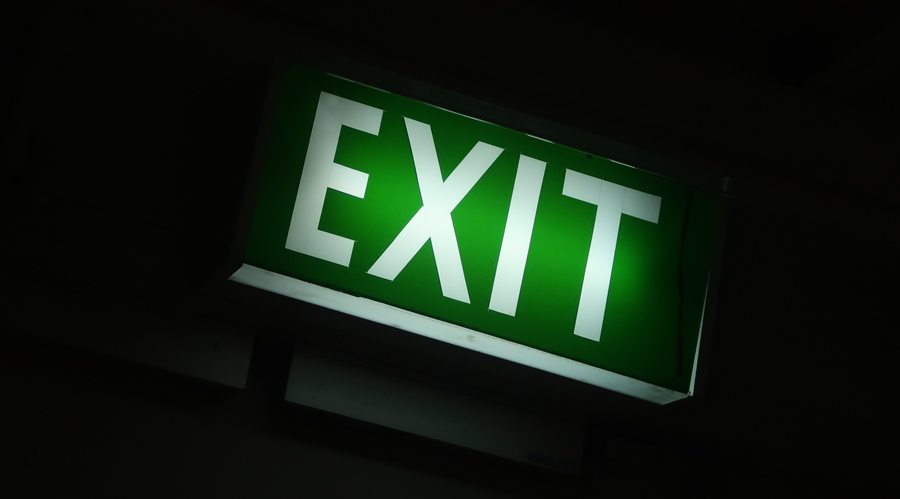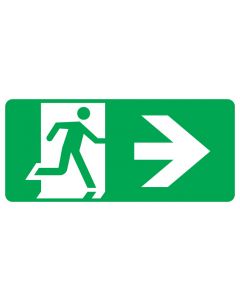Exit signs: what you need to know

Using workplace safety signs to indicate a safe way to exit a building is as important as having fire alarms and extinguishers installed. This article helps ensure your team stays safe by reducing the risk of accidents on construction sites.
Where are exit signs used?
Construction sites have a high risk of work-related accidents, so the area must be as safe as possible. All contractors in Australia and New Zealand are required to have exit signs installed so that in the event of an emergency, people can find their way out of the area.
From a legal perspective, exit signs are absolutely necessary to protect the health and person of every individual on site.
Every year, people are injured while trying to exit a building as the result of failure to follow proper evacuation procedures. When you first enter a building, become familiar with the location of the exits and make sure you can find them in an emergency.
 Location of exit signs: where should I install my safety signs?
Location of exit signs: where should I install my safety signs?
When in an emergency, people usually don’t have time to carefully study signs or directions. They're often in the middle of an evacuation, so any signs that direct them to an exit need to be extremely clear and easy to read.
They need to be bold, clear, graphic and obvious, and preferably feature pictograms so they can be understood by people of any language background.
They are placed in places where there could be a danger to a person’s safety, like inside stairwells and near building exits.
Do you know how to properly mount your exit signs?
Exit signs should be mounted in key areas that work in tandem with your emergency evacuation plan.
The NCC or National Construction Code has clear guidelines in place to help you work out where to install your exit signage. Typically, this will be in every hallway, corridor or passage that is part of the path of travel to an exit. There are specific guidelines for special buildings such as hospitals.
Do I need illuminated or glow-in-the-dark exit signs?
Signs that show exit directions are often used in conjunction with illuminated sign boxes. This is so that if there is a power outage during a fire, for example, the exit signs will still light up in dark areas and people can safely leave the building.
Australian Standards has strict compliance requirements relating to the size and illumination for exit and emergency lights. Quite often these installation requirements can be looked after by fire protection companies or commercial contractors dealing in emergency light systems.
However, if you find that you don’t need lightbox exit signs and you can use a poly or metal exit sign, these are much easier to install. In order to comply with Australian Standard 1319, you’ll need to consider the environment, lighting and viewing distance when choosing a size for your signage.
Sizes of exit signs
Exit signs for construction and building sites need to be a specific size. Generally, this is 350mm long x 180mm high however it’s always a good idea to check the regulations in your area.
Types of exit signs
- Polypropylene: this plastic material is great for outdoor use, UV stable and resistant to fading for several years.
- Metal: tough and long lasting, metal signs are strong and resistant to corrosion. They come with predrilled holes for easy mounting.
- Luminous signs are a must for all exits as they glow in the dark to ensure the exits are identified in smoke and darkness.
- Illuminated: these can be sourced from a fire safety provider and come in a range of different styles.
Where to buy exit signage
Ensure your office, warehouse and job sites remain compliant with Jaybro's emergency sign range. Take a look at our range of emergency and exit signs here.
 Sign In
Sign In 





